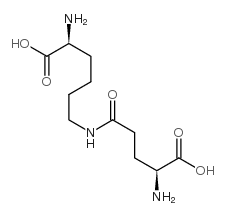Characterization of a microbial transglutaminase cross-linked type II collagen scaffold.
Damien M O Halloran, Russell J Collighan, Martin Griffin, Abhay S Pandit
Index: Tissue Eng. 12(6) , 1467-74, (2006)
Full Text: HTML
Abstract
This study investigated the effect on the mechanical and physicochemical properties of type II collagen scaffolds after cross-linking with microbial transglutaminase (mTGase). It is intended to develop a collagen-based scaffold to be used for the treatment of degenerated intervertebral discs. By measuring the amount of epsilon-(gamma-glutamyl)lysine isodipeptide formed after cross-linking, it was determined that the optimal enzyme concentration was 0.005% (w/v). From the production of covalent bonds induced by mTGase cross-linking, the degradation resistance of type II collagen scaffolds can be enhanced. Rheological analysis revealed an almost sixfold increase in storage modulus (G') with 0.005% (w/v) mTGase cross-linked scaffolds (1.31 +/- 0.03 kPa) compared to controls (0.21 +/- 0.01 kPa). There was a significant reduction in the level of cell-mediated contraction of scaffolds with increased mTGase concentrations. Cell proliferation assays showed that mTGase crosslinked scaffolds exhibited similar cytocompatibility properties in comparison to non-cross-linked scaffolds. In summary, cross-linking type II collagen with mTGase imparted more desirable properties, making it more applicable for use as a scaffold in tissue engineering applications.
Related Compounds
| Structure | Name/CAS No. | Molecular Formula | Articles |
|---|---|---|---|
 |
H-Glu(H-Lys-OH)-OH
CAS:17105-15-6 |
C11H21N3O5 |
|
In-vitro digestibility and amino acid composition of soy pro...
2009-01-01 [Int. J. Food Sci. Nutr. 60 Suppl 7 , 99-108, (2009)] |
|
Inhibition of transglutaminase activity reduces extracellula...
2004-11-12 [J. Biol. Chem. 279(46) , 47754-62, (2004)] |
|
Identification and quantification of epsilon-(gamma-glutamyl...
2005-04-20 [J. Agric. Food Chem. 53(8) , 2830-7, (2005)] |
|
Tissue transglutaminase: a mediator and predictor of chronic...
2004-06-15 [Transplantation 77(11) , 1667-75, (2004)] |
|
Tuft protein: protein cross-linking in enamel development.
2011-12-01 [Eur. J. Oral Sci. 119 Suppl 1 , 50-4, (2011)] |